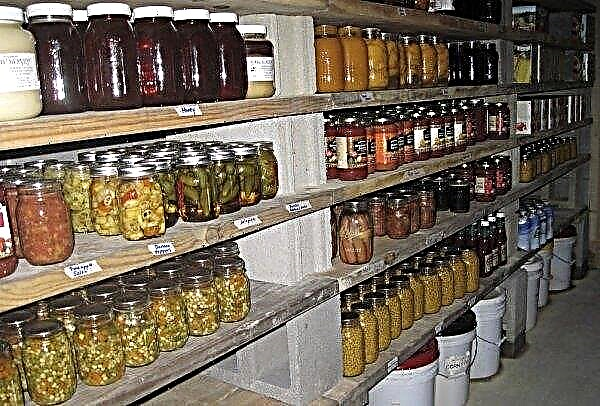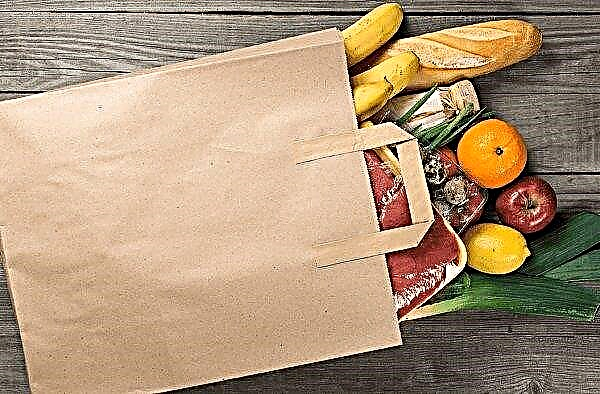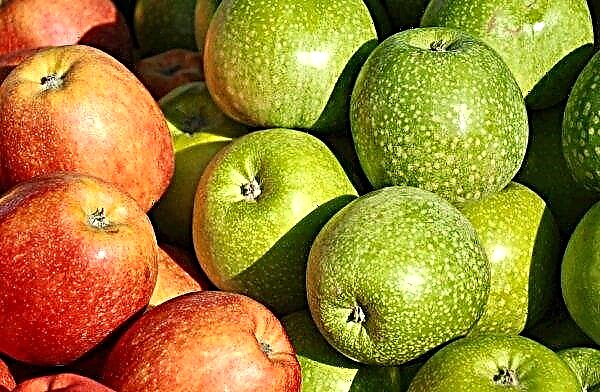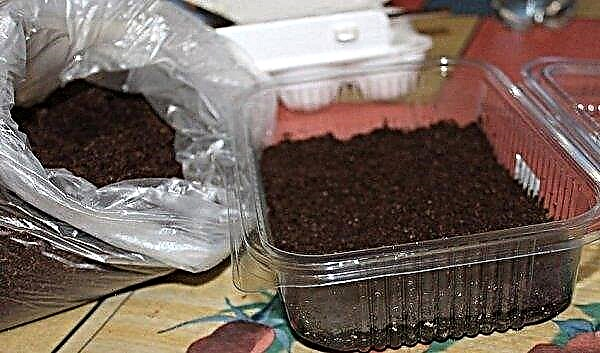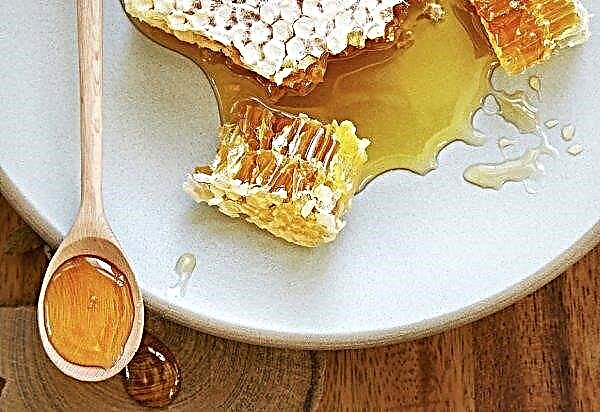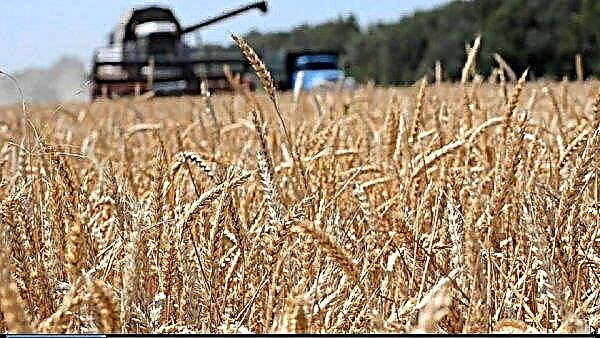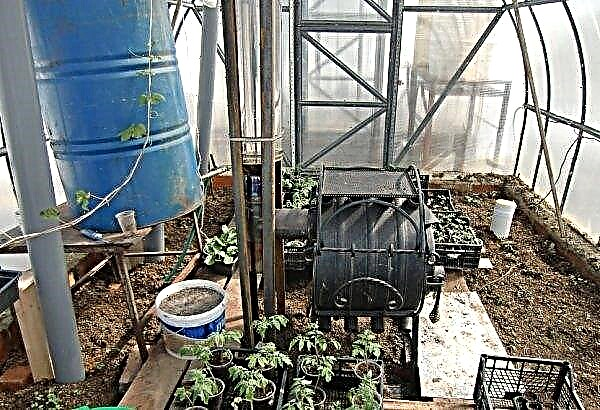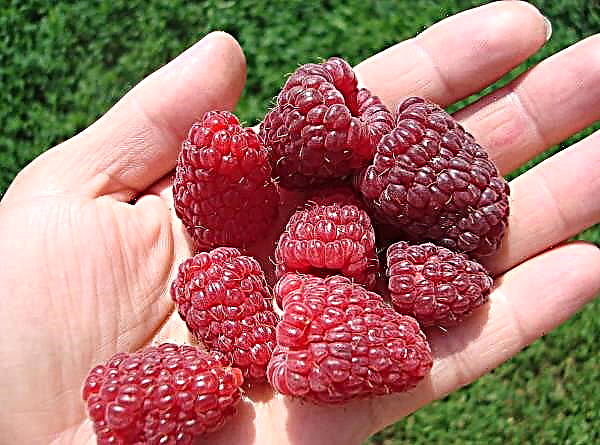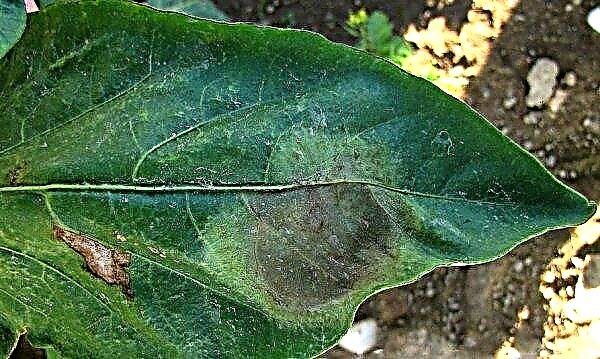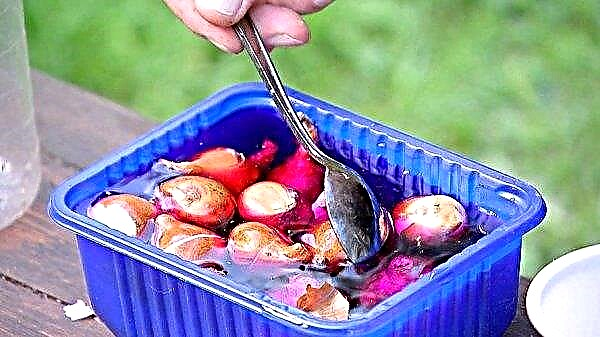The breeder from America D. Saigel as a result of hard work brought an unusual color and taste to the tomato variety, called it “Striped Chocolate”. Tomato was appreciated not only in the USA; it is also successfully grown in our latitudes.
Grade description
Having familiarized themselves with the culture and its agricultural technology, gardeners grow Chocolate Tomato not only in greenhouses, but also in open areas.
Characteristics and properties of the variety:
- bushes with a strong stem grow up to 2 m, dark green foliage is small in size, not pubescent, the root system is horizontal;
- a variety of early development, it needs 95–105 days to mature when planted in open ground;
- bears fruit with brushes, the first inflorescence is formed over 7-8 leaves, and about 5 fruits are formed on each brush;
- on average, the weight of tomatoes is 250-350 g, a roundly flattened shape, the color is dark red with a cast of bronze, dark green stripes are located at the edges;
- the fetus has a thick skin that can withstand prolonged transport;
- the pulp is dense, juicy, sugary and sweet in taste; there are 8–10 chambers with seeds;
- the variety is characterized by long-term fruiting, resistance to infections of solanaceous plants.

Advantages and disadvantages
An exotic variety is endowed with a greater number of advantages than disadvantages.
- Culture advantages:
- extended fruiting;
- resistance to mosaic, late blight, root rot, powdery mildew;
- well grown in shelter and in open beds;
- stable yield;
- large-sized fruits;
- transportability;
- spicy taste.
- Disadvantages:
- large fruit size, not suitable for conservation;
- not everyone likes tastefulness in taste;
- in intense heat, the skin is prone to cracking.
Did you know? The tomato dress, called by its creator Andy Warhol, “The Souper Dress”, at an art auction in London was estimated at $ 2 thousand, and sold about 8 times more expensive.
Self-growing seedlings
Striped Chocolate is grown by seedling.
Optimum timing for sowing
With greenhouse cultivation, sowing dates are in the second half of March; for open ground, sowing is carried out in mid-April.
The soil
The soil should be loose, with good permeability.
For the composition take:
- peat - 2 parts;
- land from the garden - 1 part;
- coarse sand - 0.5 parts.
The day before sowing, the substrate is shed with a solution of potassium permanganate. The procedure will destroy pathogens.
Capacity for growing
Containers with drainage holes will be convenient for growing. Before laying soil, rinse the tank with boiling water.
Seed preparation
Seeds are soaked in 0.1% boric acid solution for half an hour. After that, the planting material is dried. Boric acid will prevent diseases. Various stimulants are used for good germination; aloe juice is the best natural remedy. Before use, the juice is put in the refrigerator for a couple of hours to activate the properties, then the seeds are soaked in it for 1-2 hours.
Before use, the juice is put in the refrigerator for a couple of hours to activate the properties, then the seeds are soaked in it for 1-2 hours.
Did you know? One of the paintings by Pablo Picasso «Tomatoes» at an auction, Christie was sold for 13.5 million dollars.
Sowing seeds
Seeds are sown in grooves at the same distance from each other, to a depth of 1.5–2 cm. Then sprinkled with a thin layer of peat. The crop is moistened from the sprayer and covered with a plastic film.
Seedling Care
After the emergence of seedlings, the box is freed from the film cover, put on a sunny windowsill.
Microclimate for seedlings:
- temperature - +18 ... + 20 ° С;
- air humidity - 50-60%;
- lighting - 12 hours.
Watering is carried out as the soil dries, it should not be wet and should not crack from dryness. When the first pair of leaves appears, the seedlings dive by transshipment into individual pots. The first nitrogen supplementation is carried out on the 15th day after the dive.
It is better to use purchased formulations for seedlings, following the instructions. In the future, fertilizer may be needed if there are problems with the health or growth of the seedling.
Seedling hardening
The procedure helps plants adapt to changing climatic conditions, it is better to take root in an open area. Harden seedlings begin with removal to fresh air for 20-30 minutes. Every day the time increases, reaching the day of detention on the street. In general, the process takes from 10 to 14 days.
Planting seedlings in a permanent place
Beds for Striped Chocolate are prepared in the fall, choosing for planting, sheltered from the wind areas, close to tall trees, so that there is a slight shadow. The earth is saturated with humus of 4 kg per m².
Important! An undesirable landing close to the surface is the location of groundwater, since excess moisture provokes root rot.
The best predecessors are:
- cabbage;
- greenery;
- beet.
Seedlings are planted at 55-60 days of age, when the land on the site warms up to +16 ° C.
The holes are dug at a distance of 50 cm from each other, 70 cm are left between the rows. The depth of planting is regulated, focusing on the size of the roots.
The bottom of the landing fossa is richly moistened, waiting for moisture to absorb. The seedling is placed on an earthen mound, at the bottom of the fossa, straighten the roots and sprinkle with soil. After planting, water abundantly.
Outdoor Care
Striped chocolate, in addition to standard care procedures, requires additional measures.
Watering
A high yield is observed in tomatoes with respect to soil moisture of 75–80%. The topsoil must always be moist. It should be remembered that excess water will lead to watery fruit. It is better to use rainwater with a temperature not lower than +20 ° С.
The best option for watering is drip. To do this, holes are made in the lid of the plastic bottle, and the bottom is cut off. Drip the tank with the stopper down. As needed, water is poured into the container.
Top dressing
The first time the plants are fertilized 10-12 days after planting on the site. Use rotted manure diluted with water in a proportion of 1 kg / 10 l, 2 l / m² under the root. For better assimilation of nutrition, top dressing is combined with watering. If the growth of seedlings is delayed, you need to conduct another similar procedure after 2 weeks.
The second time the culture is fertilized during the formation of inflorescences. Use the same type of fertilizer, reducing the portion of manure to 700 g. Add 1 tbsp. To the solution. l any mineral complex for tomatoes (for example, "Kemira") and 3 g of copper sulfate. Watering rate of 2 l / m². During flowering, it will be useful to spray with boric acid: ¼ Art. l. / 10 l of water.
The third feeding is carried out during the fruiting period. It is advisable to use complex preparations containing, in addition to potassium and phosphorus, additional minerals. Suitable for this purpose is the drug "Solution", prepare an aqueous solution in a proportion of 1 tbsp. l. / 10 l of water. To improve ripening, 20 g of potassium sulfate is added to the solution.
Stepson
As the green mass grows, you need to regularly pick off the lower leaves, as well as leaves located close to the fruit brushes. Sections must be sprinkled with crushed activated carbon. If there are additional shoots in the sinuses of the inflorescences, they also need to be removed.
If there are additional shoots in the sinuses of the inflorescences, they also need to be removed.
Important! During fruiting, it is recommended to pinch the tops, thus stopping the growth of the bush, all its strength goes to the ripening of the fruit.
Soil care
Watering is combined with weeding and loosening the soil. Loosening should be shallow, about 5 cm, since the roots are located close to the surface.
Tall tomatoes often form subordinate roots close to the surface of the soil. Therefore, it is advisable to spud them to a height of about 7-10 cm. To restrain the growth of weeds and to retain moisture in the soil longer, planting is mulched. Peat or pine needles are used, covering the soil with a layer of 5 cm.
Bush tying
Tall stalks of tomato run the risk of breaking from the slightest blow of the wind. From the moment of landing, a support is installed for them, followed by a garter. The garter during fruiting is especially important: the fruits are heavy, and the stems are thin.
For this variety, it is convenient to use the trellis method. The ropes stretched at different intervals on two supports at different ends of the row allow you to adjust the height of the garter.
Preventative treatment
Striped Chocolate has strong immunity against most diseases. A number of measures will help strengthen the protective properties of the plant:
A number of measures will help strengthen the protective properties of the plant:
- Observe crop rotation, do not plant tomatoes in the same place twice.
- Tall bushes need room, plant no more than 3-4 bushes per m².
- Be sure to disinfect planting material and soil.
- Spraying plants with boric acid and vitriol will not only provide additional nutrition, but also protect against fungi and viruses.
- Do not overdo it with watering, try not to fall on foliage and stems. Burns make the plant vulnerable to infections.
- To prevent pests, plant repellant plants (tansy, wormwood, garlic) in the aisles.
- From the slugs, pieces of a nutshell scattered between rows will help.
- When diseases appear, use biological fungicides; use pests of wide spectrum of action against pests.
Harvesting
Harvested from the beginning of August. Tomatoes with a stem are cut off to increase shelf life. It is better to take fruits in the stage of blange ripeness.
Store the crop in a dark and dry basement, cellar. For storage use wooden boxes filled with sawdust or straw. Tomatoes have the stalk up.
“Striped Chocolate” - a fruitful variety, with an unusual taste and color of the fruit. Fruits ripen unevenly throughout the summer season. They are well stored and carry transportation.

